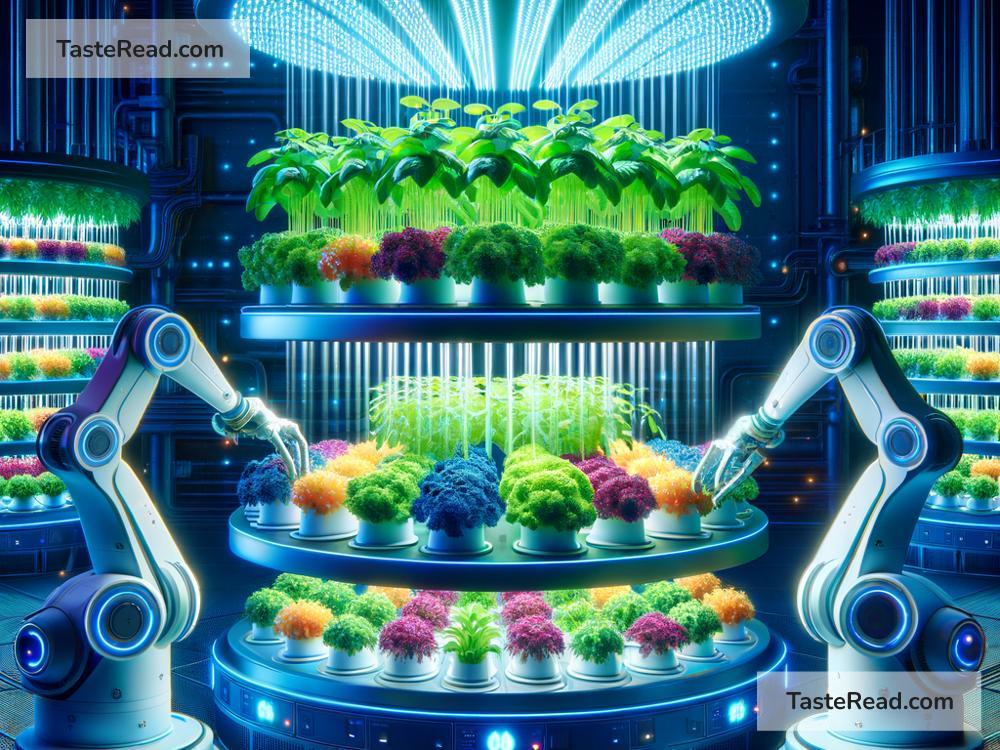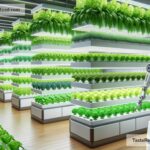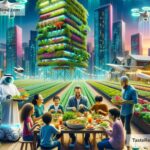The Future of Food: Transformative Systems for a Changing World
Food connects all of us. It’s more than just what we eat; it’s tied to our health, economies, cultures, and the planet itself. As the global population rises, climate change worsens, and resources become scarcer, the future of food is one of the most pressing challenges we face. But it’s also an opportunity to rethink how we grow, distribute, and consume food—creating systems that are not just sustainable, but transformative.
Let’s dive into what the future of food may look like and why these changes are necessary for the world.
The Challenges We Face
The way we produce food today has its limits. As of now:
1. Population Growth: By 2050, Earth is expected to have nearly 10 billion people. Feeding everyone will require producing up to 70% more food than we do now.
2. Climate Change: Rising temperatures, droughts, floods, and extreme weather make farming more unpredictable. Crops are struggling in places they once thrived.
3. Environmental Damage: Modern farming methods use vast amounts of water and chemicals, depleting soils and harming ecosystems. Agriculture is responsible for nearly one-third of global greenhouse gas emissions.
4. Food Waste: Roughly one-third of the food we produce is wasted, either during production, transport, or in our homes.
5. Hunger and Inequality: Even with so much food produced, millions of people still go hungry due to inequalities in distribution and access.
These challenges require urgent action, but they also open the door to innovation.
A Transformative Future: Innovative Food Systems
The food systems of tomorrow need to be smarter, kinder to the planet, and equitable for everyone. Here are some promising ideas shaping the future:
1. Alternative Proteins
Traditional meat production consumes vast resources and contributes significantly to greenhouse gas emissions. To make food systems more sustainable, scientists and companies are introducing alternative proteins:
– Plant-Based Protein: Foods made from ingredients like peas, soy, or mushrooms mimic the taste and texture of meat without the environmental impact.
– Lab-Grown Meat: Scientists are growing real meat from animal cells in laboratories. It’s ethical because it doesn’t involve raising or slaughtering animals, and it requires fewer resources.
– Insects: Though less common in Western diets, insects like crickets are a high-quality protein source with minimal environmental costs.
Alternative proteins are expected to become more affordable and widely accepted in the coming years.
2. Vertical Farming
Traditional farming takes up a lot of land, but what if we could grow food using much less space? Vertical farming makes this possible:
– Using stacked layers of soil or hydroponics (growing crops in water instead of soil), vertical farms can thrive in urban areas or places with limited farmland.
– Advanced LED lighting and climate-control systems allow crops to grow indoors, year-round, without pesticides or weather issues.
Vertical farming is efficient, produces less waste, and reduces transportation emissions because food can be grown closer to where people live.
3. Precision Agriculture
Technology is reshaping farming. For example:
– Drones and Sensors: Farmers use drones to monitor crops from above and sensors to measure soil moisture and health.
– Artificial Intelligence (AI): AI helps farmers optimize planting schedules, predict yields, and prevent problems like pests or droughts.
These tools allow farmers to use resources efficiently, reduce waste, and maximize output—all while protecting the environment.
4. Food for All
Technology isn’t the only solution; social change is vital too. The future of food must be inclusive:
– Reducing Food Waste: Governments, businesses, and individuals are working together to redistribute surplus food. Apps and organizations now connect restaurants, stores, and farms with people in need.
– Affordable and Nutritious Options: Innovations like fortifying staple foods with essential nutrients could help address malnutrition in poorer regions.
– Community-Led Solutions: Empowering local communities to create food systems suited to their needs—such as small-scale farms, co-ops, or local marketplaces—can ensure that people are part of the solution.
5. Regenerative Agriculture
Instead of farming methods that take from the earth, regenerative agriculture focuses on giving back:
– Farmers use techniques like crop rotation, cover crops, organic composting, and agroforestry (planting trees alongside crops) to rebuild soil health, lower carbon emissions, and improve biodiversity.
– This approach helps food systems not just survive, but thrive in harmony with the planet.
How Will Technology Shape Food Culture?
Technology won’t just change where food comes from—it will influence how we experience it. Artificial intelligence is already being used to create recipes and suggest meals tailored to our individual tastes and nutritional needs. Innovations like 3D food printers may one day let us create customized meals at the push of a button.
Still, food traditions and culture matter. It’s important that we balance technological progress with preserving the human love for cooking, sharing, and eating together.
A Shared Goal: Feeding the Planet Sustainably
The future of food isn’t about choosing one solution—it’s about using many systems together. Farming, technology, policy, and community action must all work hand-in-hand to create sustainable, equitable food systems. Collaboration across countries, industries, and cultures will be essential.
As individuals, we can also play a part by reducing food waste, supporting local farmers, and exploring new sustainable food options.
The road ahead has challenges, but it’s also filled with possibilities. By embracing innovation and thinking differently, we can transform how food is grown and shared—ensuring a healthier future for both people and the planet.


